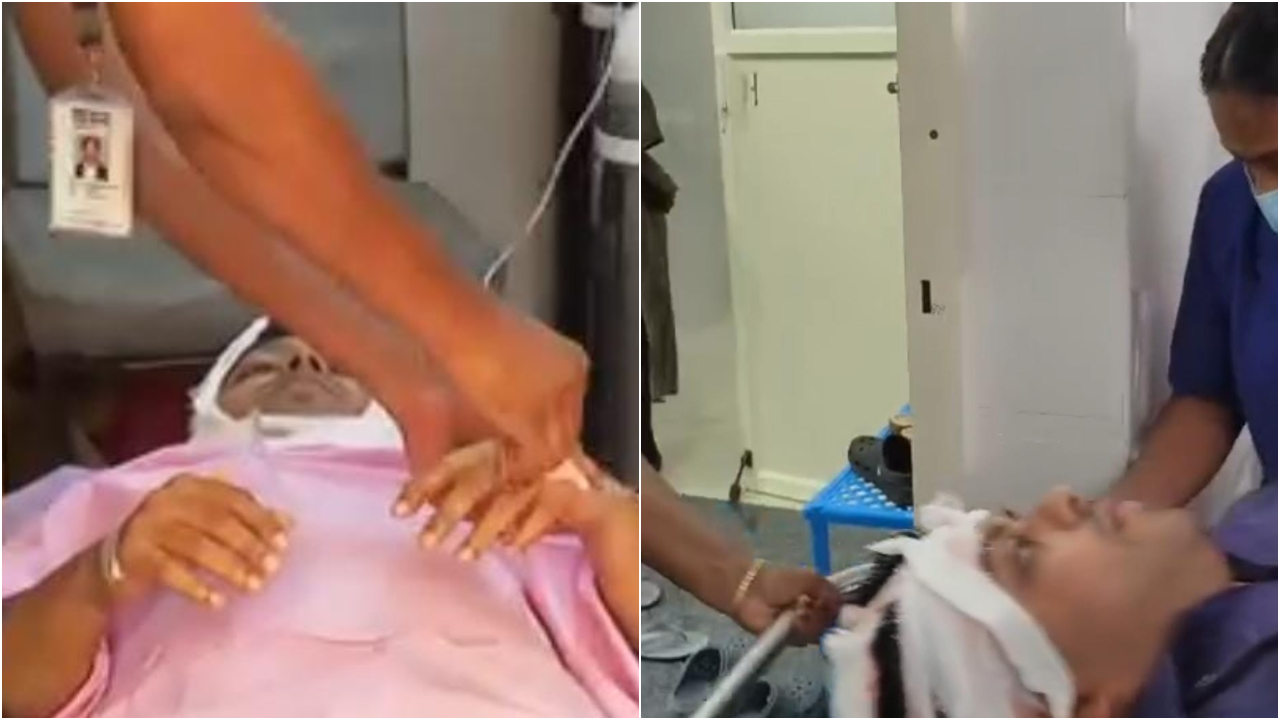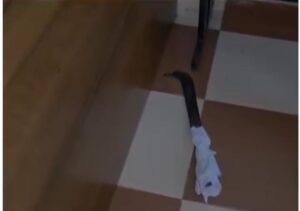A case is being registered against the accused Sanoop under relevant sections of the BNS, including attempted murder.
Published Oct 08, 2025 | 7:56 PM ⚊ Updated Oct 08, 2025 | 8:25 PM

Government doctors across Kerala will observe a statewide protest on Thursday in the wake of a brutal attack on Dr Vipin PT.
Synopsis: A doctor at Thamarassery Taluk Hospital, Kozhikode, was critically injured after being attacked with a machete by the father of a child who died of amoebic meningoencephalitis. The assailant, accusing the hospital of negligence, was arrested. The incident, sparking outrage and a medical strike, highlights ongoing safety concerns in Kerala’s hospitals despite the Code Grey Protocol.
With the medical community yet to recover from the brutal killing of young house surgeon Vandana Das at Kottarakara Taluk Hospital in May 2023, Kerala witnessed another chilling attack on a government doctor on Wednesday, 8 October.
A casualty medical officer at the Thamarassery Taluk Hospital in Kozhikode was critically injured after being hacked by the father of a nine-year-old girl who had died of amoebic meningoencephalitis two months ago.
The injured doctor, Dr Vipin PT, suffered a severe skull fracture in the attack and was rushed to Baby Memorial Hospital in Kozhikode after receiving emergency medical aid. His condition remains critical.
According to hospital officials, the assailant, identified as KV Sanoop of Korangad near Thamarassery, walked into the hospital casualty around noon with two children and demanded to meet the Medical Superintendent.
“Dr Vipin informed him that the superintendent was in a meeting. He insisted on seeing him. When the doctor and two lab technicians accompanied him to the meeting hall, he suddenly pulled out a machete and hacked Dr Vipin,” said a hospital official.

The machete used to attack Dr Vipin.
Eyewitnesses said Vipin was speaking with colleagues and a patient when Sanoop struck him on the head with a sharp-edged weapon.
The accused allegedly shouted accusations that the doctor was responsible for his daughter’s death.
He was overpowered by hospital staff, and the weapon was snatched away before police arrived and took him into custody.
“It didn’t seem like he was carrying a weapon. There were children with him. No one expected this,” a staff recounted in shock.
Sanoop’s daughter, Anaya, a Class IV student at Korangad LP School, died on 14 August after battling fever-related complications.
She had initially been admitted to Thamarassery Taluk Hospital but was later referred to the Kozhikode Government Medical College Hospital, where she succumbed the same night.
Post-mortem findings indicated amoebic meningoencephalitis, a rare but often fatal brain infection, as the cause of death.
The family had since accused the taluk hospital of medical negligence, alleging that Anaya was denied timely treatment during the “golden hour” and was shifted to MCH only at the last moment to “cover up lapses.”
Hospital authorities, however, strongly denied the charges, saying the child had received all necessary treatment and was referred to a higher centre when her condition deteriorated.
Two of Anaya’s siblings had also contracted the infection but later recovered.
Sanoop’s wife said her husband’s actions were triggered by the grief and shock following new revelations about their daughter’s death.
While doctors at Kozhikode Medical College initially said the child died due to amoebic encephalitis, the postmortem report received last week stated otherwise, she said.
“The doctor told my husband that our daughter did not have amoebic encephalitis and that her life could have been saved if she had been referred earlier,” Sanoop’s wife said.
She alleged that the child’s death was due to lack of adequate treatment at the Thamarassery Taluk Hospital, where she was first taken with fever.
“We have been running for two weeks to find the real cause of her death. After hearing the doctor’s words, he was deeply distressed,” she added.
Sanoop, after leaving home with his children, bought them food before the incident.
He reportedly told police in custody that the assault was “dedicated to the Health Department, Minister Veena George and the Medical College Superintendent.”
Police have booked him under multiple provisions of the Bharatiya Nyaya Sanhita, including Section 109(1) (attempt to murder), Section 118(2) (voluntarily causing grievous hurt by dangerous means), and Section 333 (house-trespass after preparation for assault), along with relevant sections of the Kerala Healthcare Service Persons and Healthcare Service Institutions (Prevention of Violence and Damage to Property) Act, 2012 (Amendment 2023).
The attack has triggered widespread outrage in the state’s medical fraternity. The Kerala Government Medical Officers’ Association (KGMOA) announced a flash strike across Kozhikode, boycotting all services except emergency care. At Thamarassery Taluk Hospital, all services have been suspended.
“This is unacceptable. Our doctors cannot work in constant fear,” KGMOA representatives said, demanding stronger protection measures at public health facilities.
Government doctors across Kerala will observe a statewide protest on Thursday, 9 October, in the wake of a brutal attack on Dr Vipin PT.
In a strongly worded statement, the KGMOA condemned the attack and blamed the state government and society at large for failing to ensure a safe workplace for health workers.
“This incident illustrates the insecurity and security lapses in government hospitals. Despite repeated appeals, our long-standing demand to declare hospitals as high-security zones remains unfulfilled,” the association said.
The KGMOA recalled that after the brutal killing of Dr Vandana Das in 2023, the state had promised a series of security measures.
These included deploying the State Industrial Security Force in hospitals, setting up police outposts during peak hours, and ensuring the presence of at least two doctors in each department.
However, the association alleged that most of these measures have not been effectively implemented.
While a government order was issued in 2021 for implementing a triage system in emergency departments, it remains non-functional in most hospitals due to staff shortages.
Similarly, the Code Grey protocol — designed to strengthen hospital security — has not been fully enforced.
Local bodies have also failed to appoint ex-servicemen as security personnel or install CCTV cameras in several hospitals, the association pointed out.
The KGMOA has demanded that the government declare hospitals as high-security zones, set up police outposts in major hospitals immediately, and appoint armed ex-servicemen for security duties.
It also called for the creation of at least eight posts of Casualty Medical Officers in major hospitals to ensure round-the-clock emergency care.
The association further urged society and the media to refrain from unfairly targeting doctors over rare medical complications and appealed for immediate, exemplary punishment for the perpetrator of the Thamarassery attack.
Health Minister Veena George condemned the assault, calling it “highly condemnable and shocking to the human conscience.”
“Strong legal action will be taken against the accused. Violence against healthcare workers cannot be tolerated,” she said in a statement.
Thamarassery police have taken Sanoop into custody. He has been charged with attempted murder, trespassing, assault with a weapon, and violations of the Hospital Protection Act.
After undergoing a medical check-up, he will be produced before the magistrate.
The attack has raised serious questions about the effectiveness of the state’s hospital security measures, especially since the government had unveiled a comprehensive Code Grey Protocol in March 2024 to prevent exactly such incidents.
Launched with much fanfare by the Health Minister, the Code Grey protocol was designed to ensure the safety of healthcare workers, patients, and hospitals.
Modeled on international standards and adapted to Kerala’s context, the protocol was formulated after extensive consultations with the Police, Health Department, legal experts, and medical professionals in India and abroad.
Code Grey is typically activated when a hospital faces an aggressive, violent, or threatening individual. It alerts security personnel to respond swiftly and remove or neutralise the threat, ensuring the safety of staff, patients, and visitors.
The protocol details step-by-step procedures for reporting and managing such incidents, offering psychological support and legal protection for hospital staff. It also aligns with the amended Kerala Healthcare Service Persons and Healthcare Service Institutions (Prevention of Violence and Damage to Property) Act, 2012, which imposes stricter penalties for violence inside hospitals.
The Health Department had completed a state-wide hospital safety audit and announced mock drills, security committees from hospital to state level, and specialised training for staff and security personnel to implement Code Grey effectively.
At the time, the Minister had said the protocol would “boost the safety perception in hospitals and enable health workers to work in peace.”
Wednesday’s brutal assault, however, has exposed glaring gaps in the on-ground implementation of the protocol.
Some members of the medical community have already begun questioning whether Code Grey was activated at Thamarassery Hospital, and if so, why it failed to prevent the attack.
(Edited by Amit Vasudev)
